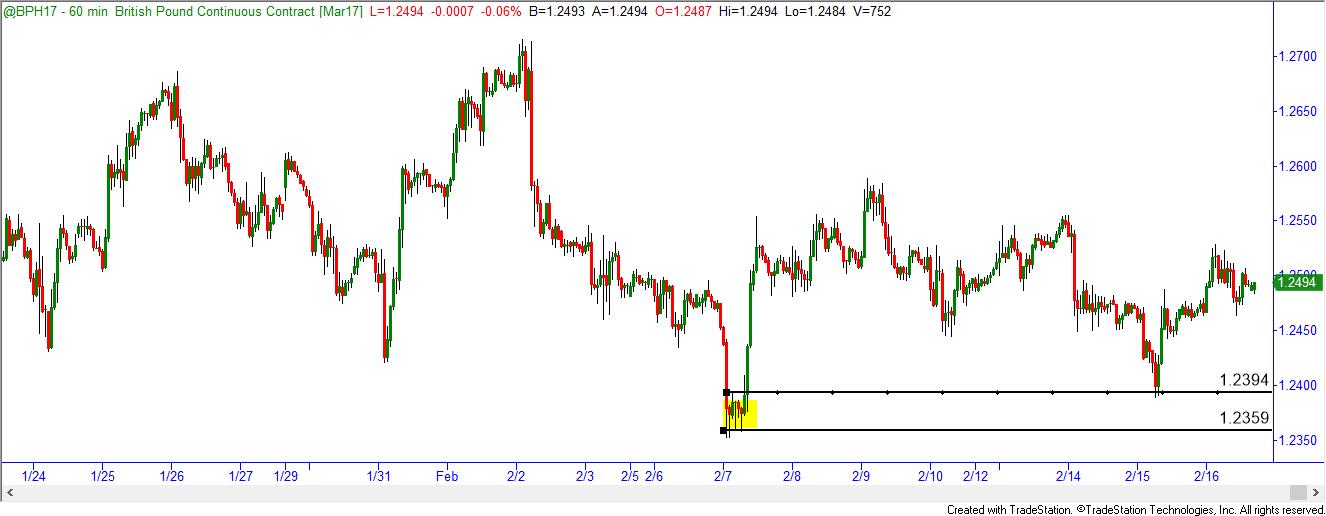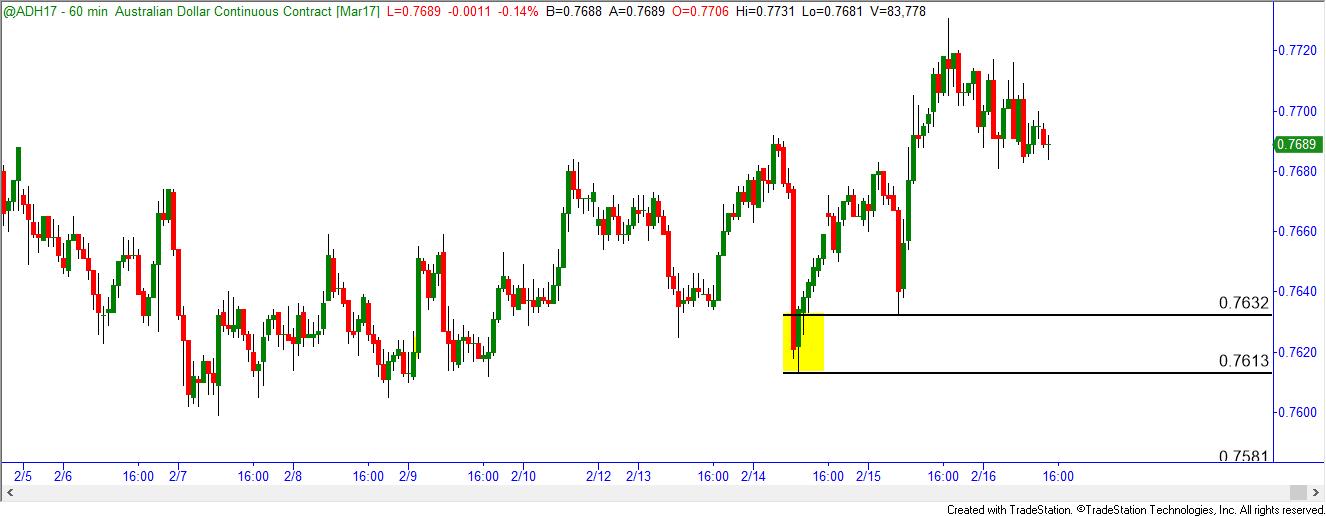Of all the facets of trading, the first a novice trader must learn before he can engage the markets with any degree of confidence is identifying low risk entry points on a price chart. Notice that not just any entry will do, only those offering the biggest reward for the least amount of capital exposed are acceptable.
If you’ve ever read about or had the chance to chat with any successful trader, you’ll find a common thread: They all (without exception) have an edge based on low risk entries and consistently execute those entries.
What defines a low risk entry? The price level where a trader can expose the least amount of capital to prove whether his edge will work. I tell students to look for these areas by identifying “the line in the sand” or “drop-dead level” where price has to hold. These are generally found at prior inflection points on the chart.
Specifically, inflection points can be spotted by looking for those price levels where there was a clear change of direction. In other words, where was the dominance of either the buyers or sellers relinquished? Moreover, the more powerful the reversal, the more important that point becomes on the retest.
Also noteworthy is the fact that the first time these levels were “tested,” not only did they provide low risk trade setups, but they also held, and reversed a high percentage of the time.
I’ve used the chart of the British Pound futures below to illustrate this premise.
Depending on how much risk one is comfortable in assuming, a limit order can be placed at the line where prices formed a zone before turning and a stop slightly below the “drop dead ” line . In this chart, we can see how fast the British Pound was falling before it reversed. This is where the lowest risk entry point was found in this trade.
In the second example, AD (Australian Dollar Futures) in the chart below was falling sharply, this is signaling an extended market in which the odds of a reversal are heightened. If we look to the right, we can see previous inflection points (highlighted in yellow). These would be deemed areas that would attract buyers. Given that we know (based on our scoring system) that there is very high probability of price holding at that zone, and our risk will is modest, we have to execute a trade against that zone.
As we can see in the chart, the zone held, and the trade worked nicely.
Suffice it to say, not all trades will work as well as these did, but the key here is when they don’t pan out, the losses will be minimal compared to the profit potential.
Once a trader learns the skill of identifying these levels, the biggest challenge is putting on the trades. Why do I say this? Well, all of these trades are being placed when price is either retracing or the market is moving strongly into one of these areas.
If you look closely at the two chart examples, in both trades you were buying into a series of red candles and the trend was lower; psychologically, this doesn’t sit well with most non-professional traders. Only by knowing probabilities and accepting risk can a trader place these trades with a high degree of self-assurance.
The other issue is patience. These setups don’t come about every minute, or five minutes for that matter – more like two or three times on some days.
Indeed, this style of trading perhaps is not for everyone, but regardless of your method, identifying and executing low risk entries are the hallmark of a consistently profitable trader.
Until next time, I hope everyone has a great trading week.
This content is intended to provide educational information only. This information should not be construed as individual or customized legal, tax, financial or investment services. As each individual's situation is unique, a qualified professional should be consulted before making legal, tax, financial and investment decisions. The educational information provided in this article does not comprise any course or a part of any course that may be used as an educational credit for any certification purpose and will not prepare any User to be accredited for any licenses in any industry and will not prepare any User to get a job. Reproduced by permission from OTAcademy.com click here for Terms of Use: https://www.otacademy.com/about/terms
Editors’ Picks
EUR/USD eases below 1.0900 amid cautious mood

EUR/USD has erased gains to trade on the back foot below 1.0900 early Tuesday. The pair treads water amid a cautious market mood, as traders weigh the US political updates and China slowdown worries. The US Dollar remains subdued, in the absence of top-tier economic data.
GBP/USD drops toward 1.2900 as US Dollar looks to stabilize

GBP/USD is dropping toward 1.2900, lacking firm direction in European trading on Tuesday. The US Dollar looks to stabilize after the early decline, weighing on the pair. Traders await mid-tier US housing data for fresh trading impetus.
Gold price struggles to gain ground amid mixed fundamental cues

A combination of factors drag the Gold price lower to nearly a one-week low on Tuesday. Bets that the Fed will cut rates in September could lend support and help limit losses.
Bitcoin price struggles around $67,000 as US Government transfers, Mt. Gox funds movement weigh

Bitcoin (BTC) struggles around the $67,000 mark and declines by 1.7% at the time of writing on Tuesday at around $66,350. Bitcoin spot ETFs saw significant inflows of $530.20 million on Monday.
Big tech rebound ahead of earnings, Oil slips
/stock-market-graph-gm532464153-55981218_XtraSmall.jpg)
Tesla and Google are due to report earnings today after the bell, and their results could shift the wind in either direction. Despite almost doubling its stock price between April and July, Tesla sees appetite for its cars and its market share under pressure.
RECOMMENDED LESSONS
Making money in forex is easy if you know how the bankers trade!
Discover how to make money in forex is easy if you know how the bankers trade!
5 Forex News Events You Need To Know
In the fast moving world of currency markets, it is extremely important for new traders to know the list of important forex news...
Top 10 Chart Patterns Every Trader Should Know
Chart patterns are one of the most effective trading tools for a trader. They are pure price-action, and form on the basis of underlying buying and...
7 Ways to Avoid Forex Scams
The forex industry is recently seeing more and more scams. Here are 7 ways to avoid losing your money in such scams: Forex scams are becoming frequent. Michael Greenberg reports on luxurious expenses, including a submarine bought from the money taken from forex traders. Here’s another report of a forex fraud. So, how can we avoid falling in such forex scams?
What Are the 10 Fatal Mistakes Traders Make
Trading is exciting. Trading is hard. Trading is extremely hard. Some say that it takes more than 10,000 hours to master. Others believe that trading is the way to quick riches. They might be both wrong. What is important to know that no matter how experienced you are, mistakes will be part of the trading process.


